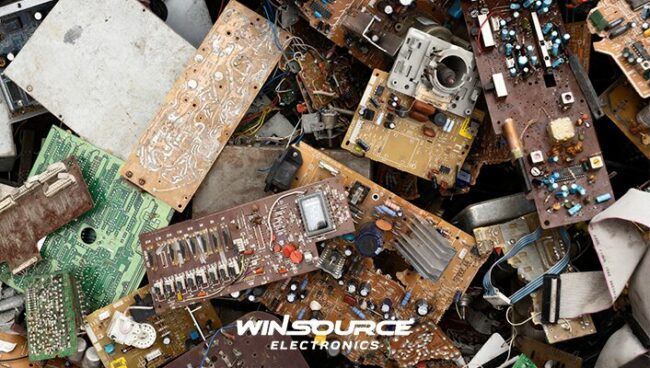
The rapid development of electronic products has led many consumers to constantly buy the latest products and upgrade them, resulting in a large amount of electronic waste. The electronic components in these devices often contain harmful substances such as heavy metals. If they are casually discarded, they will cause serious pollution and health hazards to the environment and humans.
First of all,the hazards of harmful substances such as lead and mercury contained in electronic components are extremely serious. These substances accumulate in groundwater, soil, and the atmosphere over the long term, causing severe damage to the environment and ecological balance. Lead is a toxic heavy metal that can cause significant harm to the human body, especially to children and pregnant women. Long-term exposure to lead can lead to damage to the nervous system, liver, kidneys, and other organs, as well as affect human intelligence and behavioral abilities. Mercury, also a toxic heavy metal, can cause significant harm to the human body, especially to the development of fetuses and infants. Long-term exposure to mercury can cause damage to the nervous system, immune system, and other functions, and may also lead to symptoms such as mobility difficulties and visual impairments.
In addition to lead and mercury, electronic components also contain other harmful substances such as cadmium, chromium, and bromine. These substances can also cause significant harm to human health and the environment. For example, cadmium can cause kidney damage and osteoporosis, chromium can cause itching and dermatitis, and bromine can affect thyroid function. Therefore, we should attach great importance to the treatment of electronic waste and minimize its impact on the environment and health.
Secondly, casually discarding electronic components can also lead to the waste of precious resources. These components often contain rare metals such as lithium, tungsten, and cobalt, which are highly valuable resources. The production of electronic components requires a large amount of energy and resources, including these rare metals. Disposing of these components at will not only wastes these valuable resources but also requires additional resources to produce new components to replace them, further depleting the environment and resources.
So how should we properly treat these contaminated electronic components? From the perspective of customer groups, we can take the following measures:
Firstly, reduce the production of electronic waste and prolong the service life of devices as much as possible. For example, for old computers, they can be upgraded to extend their service life and reduce the replacement rate of devices.
Secondly, properly handle discarded electronic products. Consumers can send discarded electronic products to designated recycling points through the recycling bin and other channels. In the process of handling these electronic products, they should be classified, and hazardous substances and recyclable materials should be separated to ensure that hazardous substances are properly handled.
In addition, Win Source provides alternative solutions. For example, users can recycle and dispose of unwanted and contaminated electronic components through Win Source, or consult the Win Source environmental management team for help in identifying and treating contaminated components, such as guiding customers in the correct disposal of discarded electronic products and batteries. In addition to providing alternative solutions, Win Source has taken a series of measures to protect the environment and promote sustainable development. For example:
- Environmental management team: Win Source has a strong environmental management team composed of professional personnel, who are committed to environmental protection and sustainable development. Team members participate in environmental protection and sustainable development activities to raise employee awareness and promote environmental protection concepts.
- Environmental logistics: Win Source uses environmentally friendly logistics, optimizing logistics networks and using environmentally friendly packaging materials to reduce the impact on the environment during transportation.
- Supply chain management: Win Source has a strong supply chain system and works closely with suppliers to jointly promote environmental protection concepts, reducing the impact on the environment from the source.
- RoHS certification: All electronic products of Win Source comply with RoHS standards, using environmentally friendly materials and processes to reduce the impact on the environment from the production process.
In summary, Win Source is committed to protecting the environment and promoting sustainable development, providing customers with comprehensive solutions. By taking various measures, including providing alternative solutions, establishing environmental management teams, using environmentally friendly logistics, strengthening supply chain management, and obtaining RoHS certification, Win Source is committed to reducing the impact on the environment and promoting sustainable development.

COMMENTS